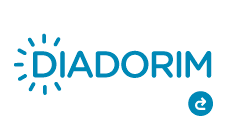Portuguese ANÁLISE DO PENSAMENTO ALGÉBRICO EM LIVROS DIDÁTICOS DO ENSINO FUNDAMENTAL
Abstract
Teachers in Brazilian public schools generally use the Common National Curriculum Base (BNCC) and the materials provided by the school itself as a parameter to build the teaching and learning process of students. In this way, one of the means for the Algebraic Teaching to be elaborated is considering the Textbooks (DL). However, how are Algebra contents presented in Textbooks for Elementary School students? Do these books respect the construction process of algebraic thought? With such concerns, this work aims to analyze if and how the construction of algebraic thinking is carried out in elementary school mathematics textbooks from sixth to ninth grade, offered to public school students in a city in the interior of the state of São Paulo. To achieve the aforementioned objective, several literatures were considered, among which we highlight the construction of algebraic thinking, the use of Textbooks in Mathematics classes and Bardin's Content Analysis to categorize the data observed in our research corpus. Considering two textbooks collections, we could observe that, although both address issues of algebraic teaching, there are gaps in its construction process, particularly in the presentation of the initial concepts of algebra for institutionalizing this mathematical knowledge. In particular, notions of variable and unknown have distinctions in their initial construction, resulting in possible obstacles in the development of the teaching and learning process of algebraic thinking.
Downloads
References
BARDIN, L. Análise de conteúdo (L. de A. Rego & A. Pinheiro, Trads.). Lisboa: Edições 70, 2011. (Obra original publicada em 1977).
BLANTON, M. L.; KAPUT, J. J. Characterizing a classroom practice that promotes algebraic reasoning. Journal for Research in Mathematics Education, Reston, v. 36, n. 5, p. 412-443, nov. 2005.
BOYER, C. B. História da matemática. Tradução: Elza Gomide. São Paulo: Edgard Blücher Ltda, 1974.
BRASIL. Base Nacional Comum Curricular (BNCC). Educação é a Base. Brasília, MEC/CONSED/UNDIME, 2017.
DENZIN, N. K. e LINCOLN, Y. S. O planejamento da pesquisa qualitativa: teorias e abordagens. 2. ed. Porto Alegre: Artmed, 2006.
GIL, K. H. Reflexões sobre as dificuldades dos alunos de álgebra. 2008. 120 p. Dissertação (Programa de pós-graduação em educação em ciências e matemática). Pontifícia
Universidade Católica do Rio Grande do Sul.
LAJOLO, M. "Livro didático: um (quase) manual de usuário." Em Aberto, Brasília, ano 16, n.69, jan./mar. 1996.
MINISTÉRIO DA EDUCAÇÃO. Guia Digital do PNLD 2020. Brasília: MEC, 2019.
PARÂMETROS CURRICULARES NACIONAIS (PCNs). Introdução. Ensino Fundamental. Brasília: MEC/SEF, 1998.
PEREIRA, D., SILVA, J., SILVEIRA, V. Álgebra no Ensino Fundamental: Por que pesquisar? 2018. Dissertação (Programa de pós-graduação em educação em ciências e matemática). Pontifícia Universidade Católica de Goiás
PONTE, J. P.; BRANCO, N.; MATOS, A. Álgebra no Ensino Básico. Ministério da Educação de Portugal, 2009.
USISKIN, Z. Concepções sobre a álgebra da escola média e utilizações das variáveis. In: COXFORD, A. F.; SHULTE, A. P. (orgs.). As ideias da Álgebra. São Paulo: Atual, 1995. p. 9-22.
DECLARAÇÃO DE ORIGINALIDADE E DIREITOS AUTORAIS
Declaro que o presente artigo é original, não tendo sido submetido à publicação em qualquer outro periódico nacional ou internacional, quer seja em parte ou em sua totalidade.
Os direitos autorais pertencem exclusivamente aos autores. Os direitos de licenciamento utilizados pelo periódico é a licença Creative Commons Attribution 4.0 (CC BY ): são permitidos o acompartilhamento (cópia e distribuição do material em qualqer meio ou formato) e adaptação (remix, transformação e criação de material a partir do conteúdo assim licenciado para quaisquer fins, inclusive comerciais.

Recomenda-se a leitura desse link para maiores informações sobre o tema: fornecimento de créditos e referências de forma correta, entre outros detalhes cruciais para uso adequado do material licenciado.

















